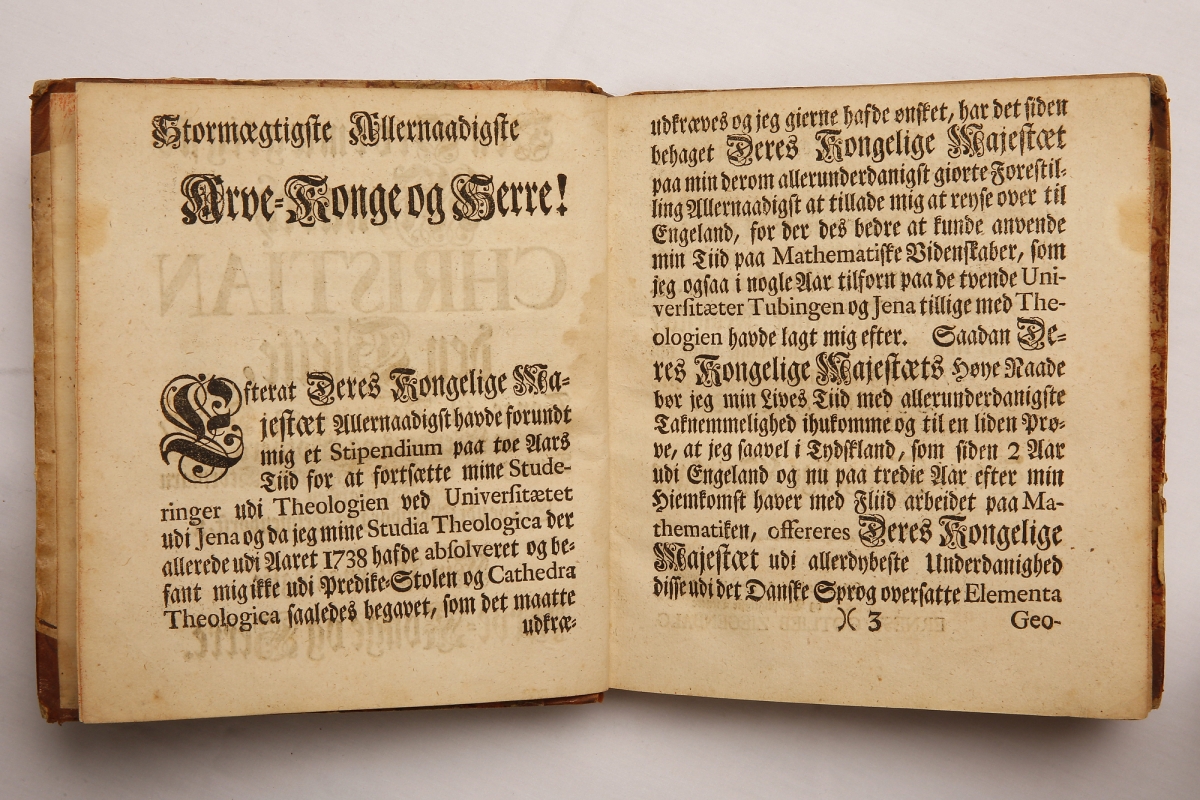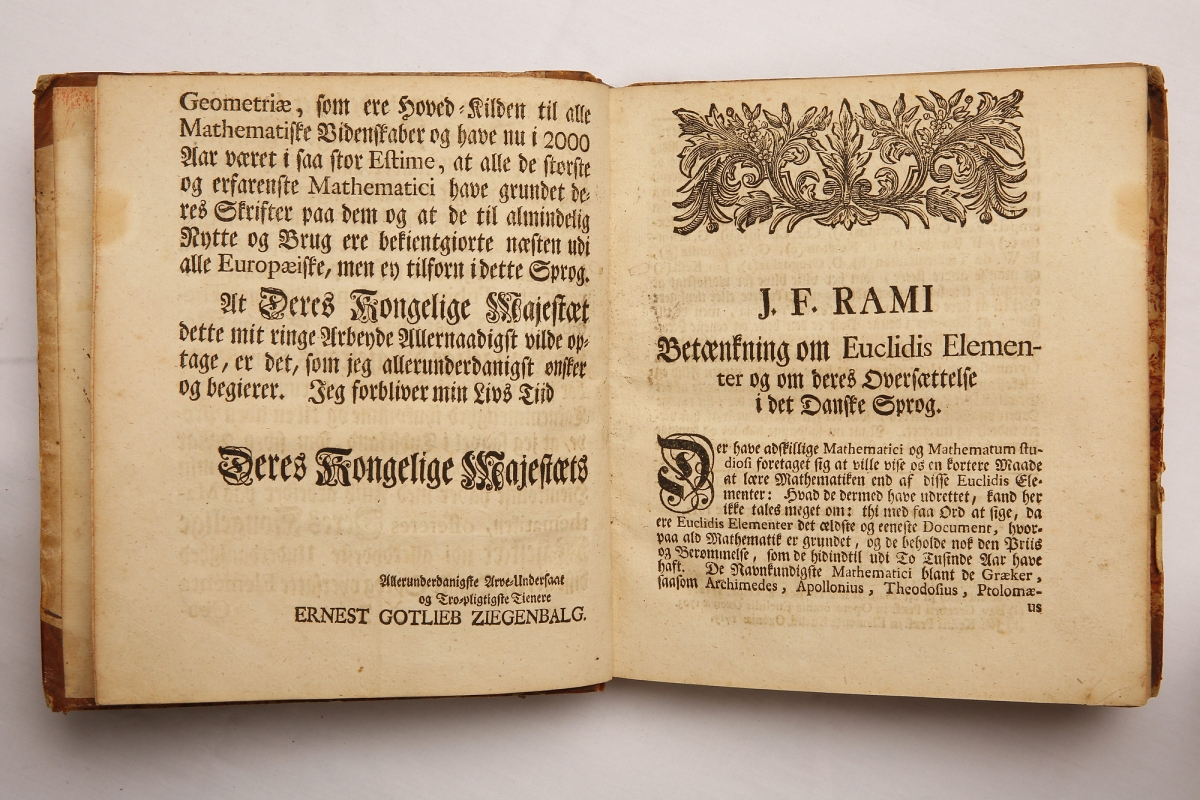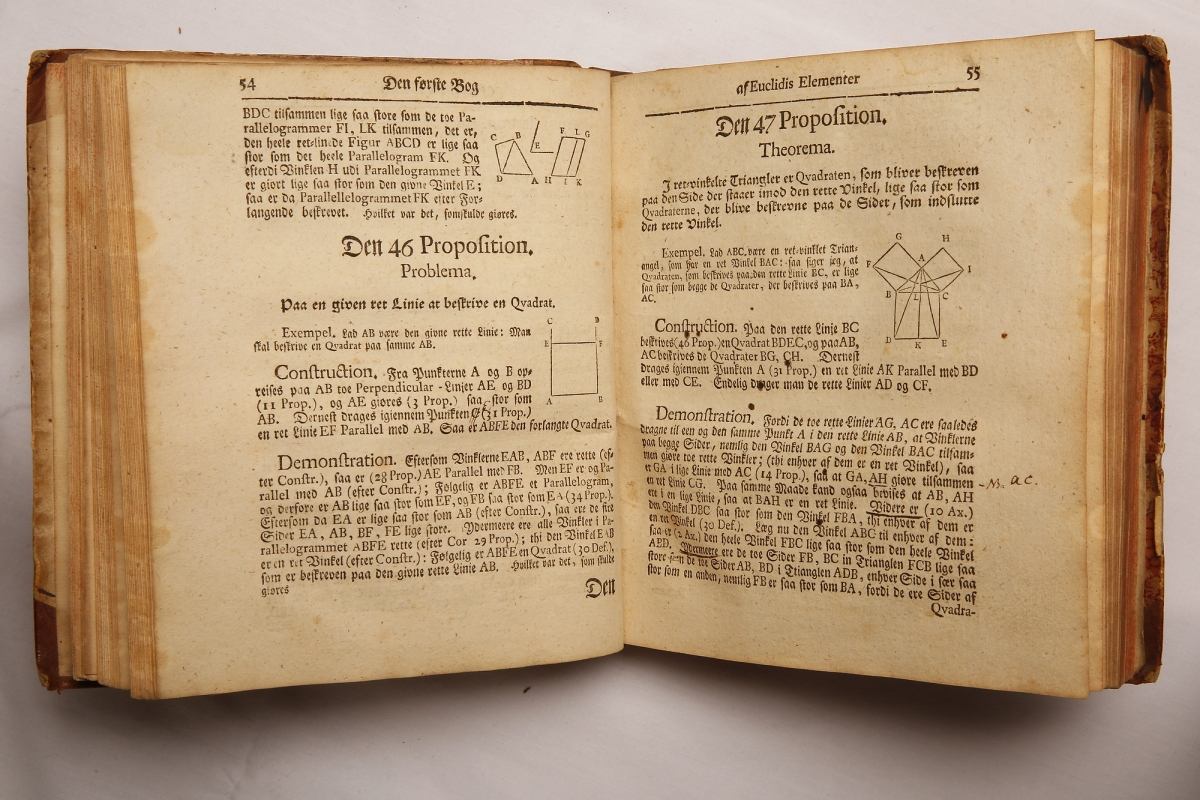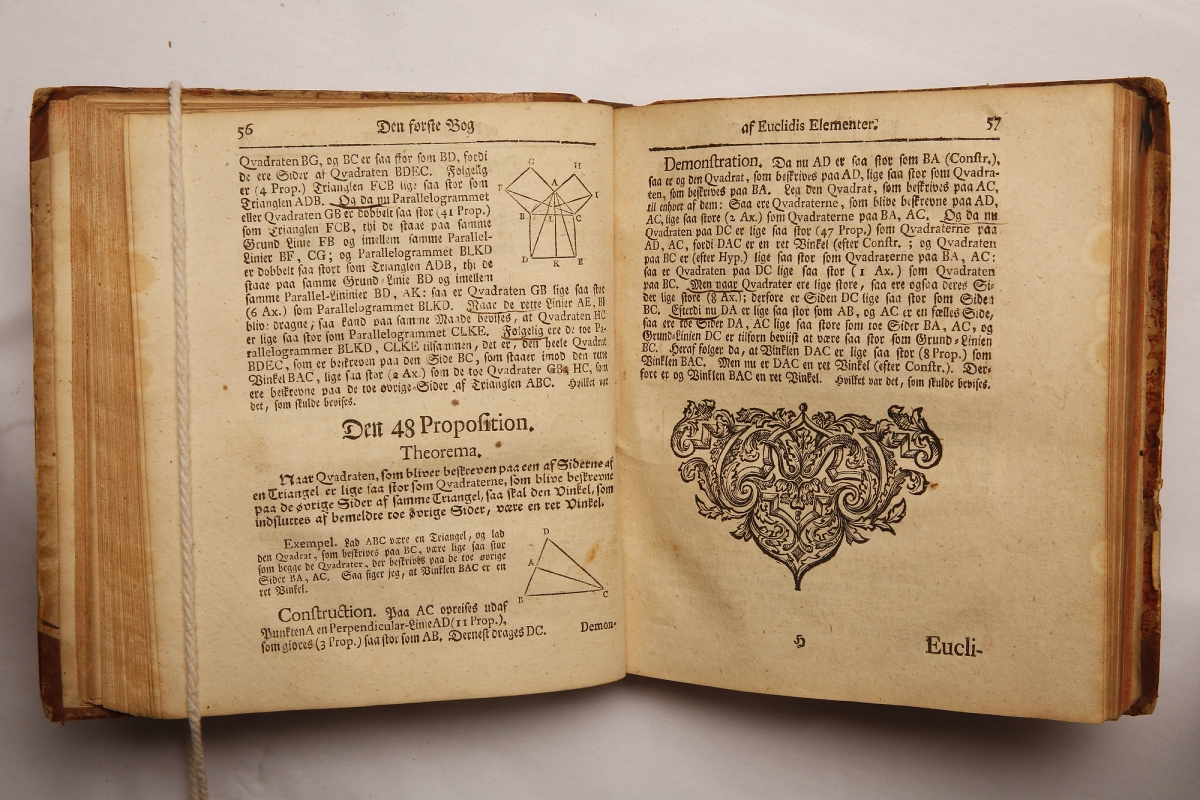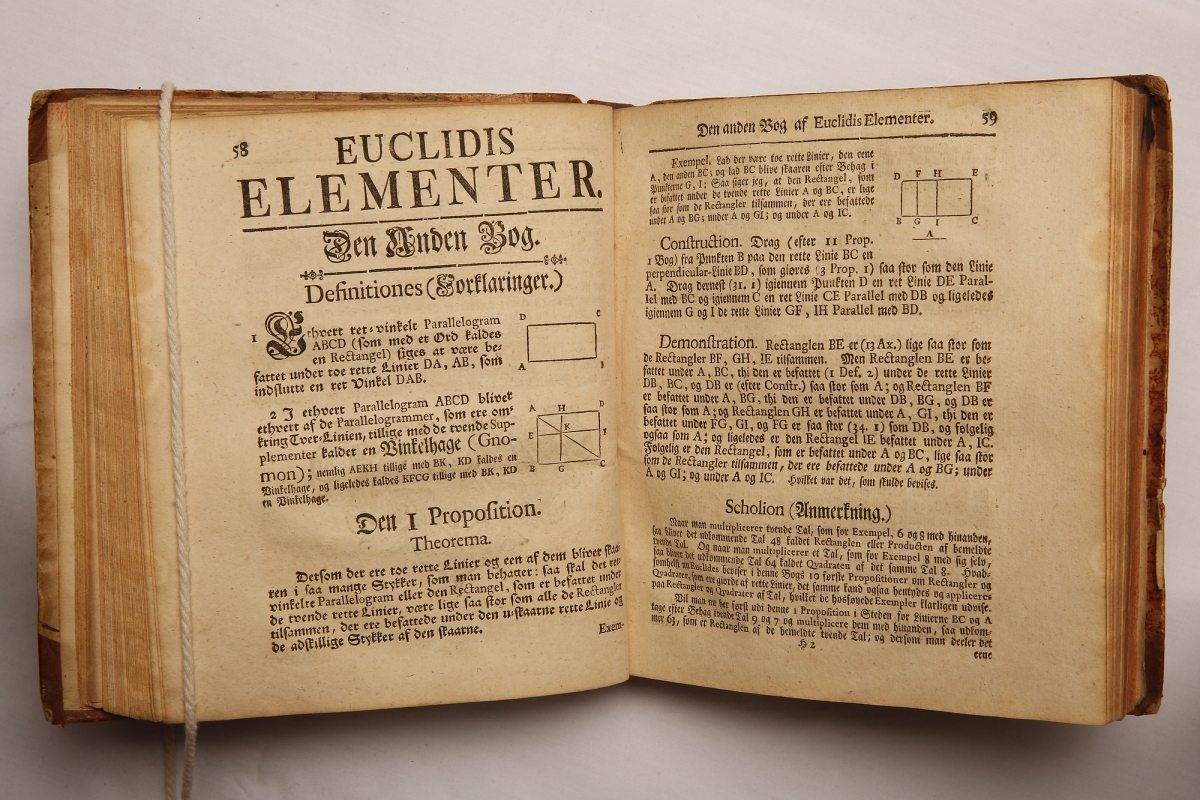- About MAA
- Membership
- MAA Publications
- Periodicals
- Blogs
- MAA Book Series
- MAA Press (an imprint of the AMS)
- MAA Notes
- MAA Reviews
- Mathematical Communication
- Information for Libraries
- Author Resources
- Advertise with MAA
- Meetings
- Competitions
- Programs
- Communities
- MAA Sections
- SIGMAA
- MAA Connect
- Students
- MAA Awards
- Awards Booklets
- Writing Awards
- Teaching Awards
- Service Awards
- Research Awards
- Lecture Awards
- Putnam Competition Individual and Team Winners
- D. E. Shaw Group AMC 8 Awards & Certificates
- Maryam Mirzakhani AMC 10 A Awards & Certificates
- Two Sigma AMC 10 B Awards & Certificates
- Jane Street AMC 12 A Awards & Certificates
- Akamai AMC 12 B Awards & Certificates
- High School Teachers
- News
You are here
E. G. Ziegenbalg’s Danish Translation of Euclid’s Elements: Ziegenbalg’s Preface and Introduction
In his preface, Ziegenbalg reiterated his gratitude to King Christian VI, gave information about his (Ziegenbalg’s) academic studies, and praised the Elements as “the main source of all mathematical sciences and the basis of the writings of the greatest and most experienced mathematicians.”
Figure 7. Ziegenbalg’s preface, addressed to King Christian VI (top and bottom left),
and the beginning of Ramus’ introduction as reprinted by Ziegenbalg (bottom right).
In his introduction, Ziegenbalg explained that he chose to omit Books 7–10 from the translation because they deal with numbers rather than geometry. For an account of the nature of mathematics, he referred the reader to the 1741 Danish translation [Wolff 1741][13] of Christian Wolff’s (1679–1754) Der Anfangs-Gründe aller mathematischen Wissenschafften from 1710. At the time, there was no account in Danish of the origin and development of mathematics, so Ziegenbalg included a Danish translation of André Tacquet’s (1612–1660) account of the history of mathematics from the earliest times. Next, Ziegenbalg provided a discussion of the structure and teaching method of the Elements, including how his translation was arranged. Ziegenbalg’s arrangement of the text, as explicitly described in the introduction and as can be seen throughout the book, is identical to that used by Ramus, described on the previous page. Ziegenbalg called the second part of Ramus’ formatting, which Ramus did not label in [Ramus 1756], Exempel, “example.” That is, it is a restating of the proposition with reference to a particular figure (the example). He called the third and fourth parts Construction and Demonstration, respectively. The arrangement can be seen, for example, in Figure 9, which shows Proposition 2.1. Finally, he summarized each of Books 1–6 and 11–12. Ziegenbalg noted that the summaries were based on similar summaries in the edition of Tacquet’s Elementa geometriae published in 1722 in Cambridge [Tacquet 1722], which is also where Ziegenbalg found Tacquet's essay on the origin of mathematics.
Figure 8. Propositions 1.46–48, including the Pythagorean theorem (Proposition 1.47).
Figure 9. The beginning of Book 2.
Toke Lindegaard Knudsen (State University of New York at Oneonta), "E. G. Ziegenbalg’s Danish Translation of Euclid’s Elements: Ziegenbalg’s Preface and Introduction," Convergence (October 2021)

